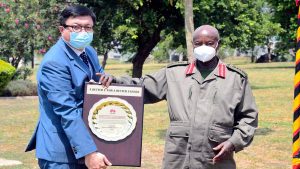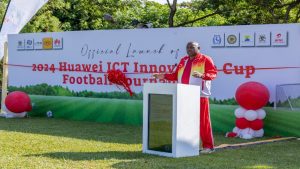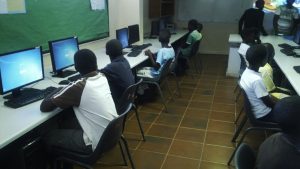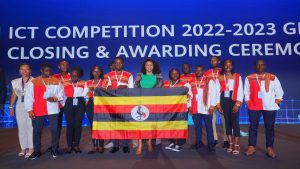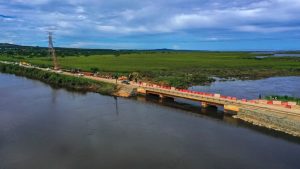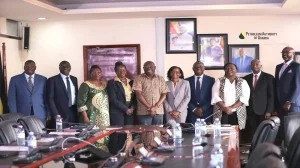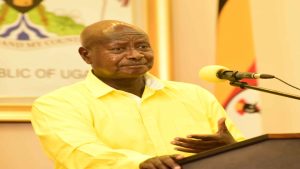Share
With plans to launch a second satellite with the goal of enhancing communication capabilities, including telephone and television, Uganda is making tremendous advancements in its space program. As part of a collaborative endeavor with Japan, the nation launched PearlAfricaSat-1, its first satellite, last year.
The launch of a second satellite is planned with the aim of improving communication capabilities, including telephone and television. Uganda’s space program is making great progress. The nation launched PearlAfricaSat-1 last year, its first satellite, as part of a joint effort with Japan.
According to Dr. Monica Musenero, the Minister of Science, Technology, and Innovation, Uganda is preparing to send a second satellite into orbit.
“This one will increase our ability to communicate and use devices like phones and TVs. We are making steady progress and developing the necessary capacity, ” Dr. Musenero stated on Wednesday in Kampala at the beginning of this year’s National Science Week.
Uganda launched PearlAfricaSat-1, the nation’s first satellite, last year.
The BIRDS initiative, a cross-border interdisciplinary satellite project for non-spacefaring nations financed by Japan, includes the spacecraft created by Ugandan engineers Edgar Mujuni, Bonny Omara, and Derrick Tebusweke.
The advancement came as a result of Uganda’s agreement with Japan’s Kyushu Institute of Technology (Kyutech), which called for enhancing the abilities of three graduate engineers in order for them to design, construct, test, and launch Uganda’s first satellite.
It was designed to provide research and observation data in six main areas, including weather forecasting, land, water, and mineral mapping, agriculture monitoring, infrastructure planning, border security, and disaster prevention. The satellite was loaded with more than 8,200 pounds of research, crew supplies, and hardware.
Cosmas Mwikirize, the director of the industrial value chains development at the Science, Technology, and Innovation department, said on Wednesday that since the PearlAfricaSat-1 was only the beginning for the nation, not much was anticipated from the nation’s first satellite.
“The first satellite we launched had limited capacity because it was our first shot into space, but we have now started the work towards developing our second satellite built by our own people,” Mwikiriza added.
“The first satellite is in orbit, but it has a limited lifespan and functionality. It was never anticipated that it would provide us a lot of national capability. It was a satellite created by students with a small capacity, but it will let us show that we can achieve it.
He was quick to point out, however, that the nation is presently progressing toward building the skills required for larger and better satellites.
“The space program is considerably larger than assets (satellites), yet as a nation, we have made significant progress. We sent three engineers to Japan in the year 2020 to work on the first satellite despite having zero capacity on any front.
According to him, as part of the mission to advance its space program, Uganda has transformed the Mpoma satellite into a cutting-edge earth station that can assist the nation in managing not only its satellites but also obtaining data from other nations with which it has partnerships.
According to Mwikirize, Uganda has trained a number of engineers abroad, including in China, Egypt, and Japan, as part of the initiative.
“We are gradually expanding the necessary human capital, which will aid in the creation of both products and assets. Together with our partners, we are developing the second satellite in Uganda.
According to the Minister of Science, Technology, and Innovation, Uganda will highlight its scientific and innovative achievements during the National Science Week scheduled for November 6–11, 2023.
“As of July 2023, Uganda had an average age of 16.3 years, which is consistent with a generation that was reared at a period of rapid technological advancement. We are strategically organizing our efforts as a Secretariat under the Office of the President to address the specific demands of this growing demographic by supporting innovations catered to their needs. The use of artificial intelligence to improve industry and production, pathogen research’s contributions to vaccine and drug development, forays into space and aeronautics exploration, and the advancement of technological innovations aimed at enhancing transportation and mobility are some of our core thematic areas, according to Dr. Musenero.
According to a poll by the United Nations Development Programme (UNDP), Uganda moved up 132 places to 119th place in the Global Innovation Index for 2022.
According to the minister, this increased trend highlights Uganda’s consistent commitment to improving science and technology and denotes significant accomplishments in this area.
She pointed out that as a result, the National Science Week would act as a crucial platform, carefully planned to highlight Uganda’s accomplishments in the fields of science, technology, and innovation both on a national and international level.
“Innovation, science, and technology are the forces of economic revolution. We are optimistic that the government’s strategic effort in this sector is starting to show results and preparing Uganda for global competition. Our main goal is to export technology and end our reliance on imported items in the science, technology, and innovation sectors, which have dominated our previous decades.
The topic of this year’s National Science Week is “Uganda Tusimbudde: Our science-led journey towards socio-economic transformation,” and President Museveni will inaugurate it.



